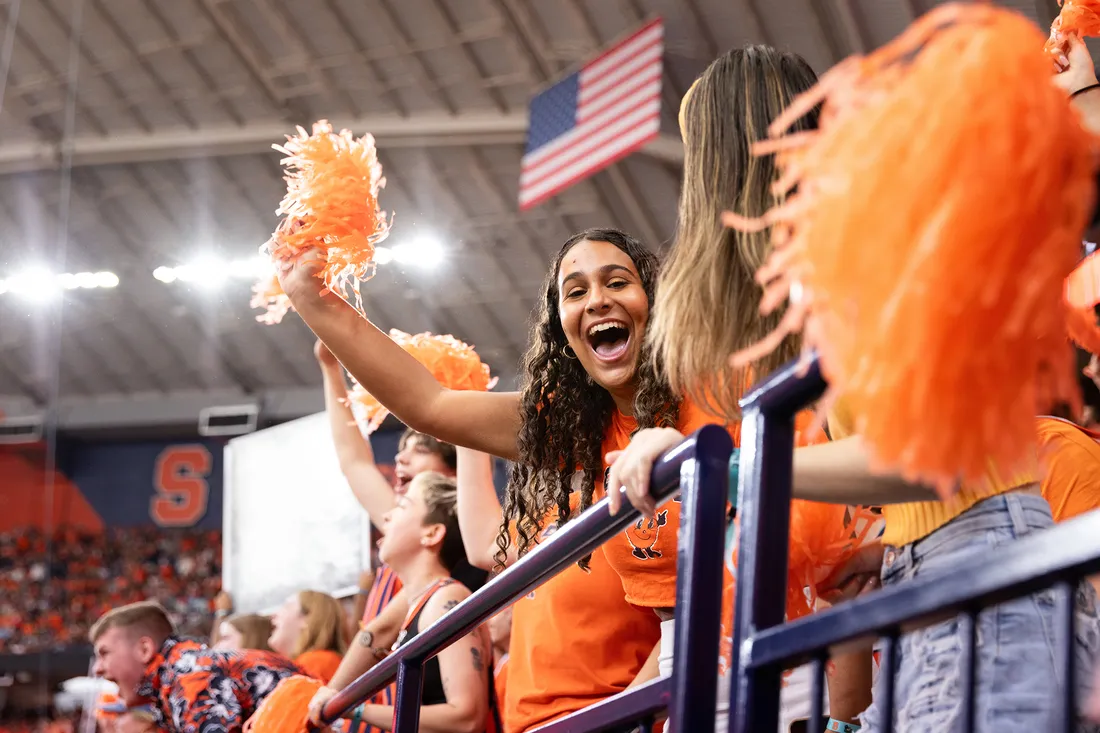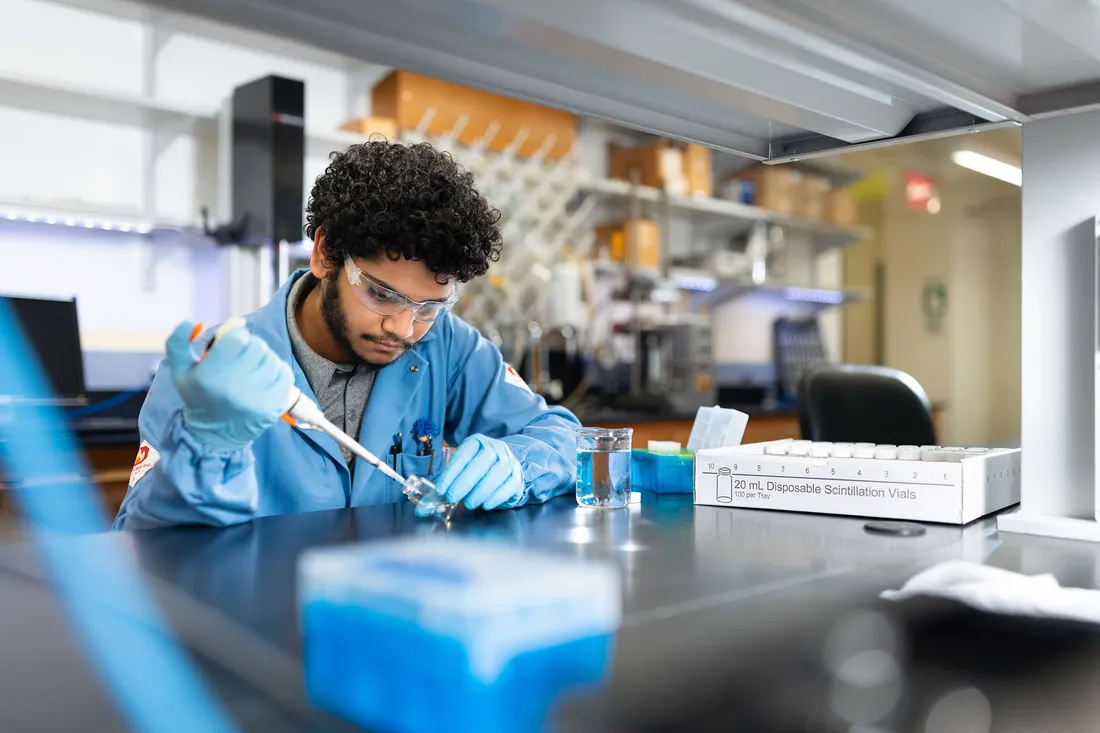Here at Syracuse University, traditions are the heartbeat of campus life. They create a sense of community for our Orange family—past, present and future. From celebrating beloved mascots to participating in time-honored rituals, here are some of the traditions that make the Syracuse experience truly unforgettable.
Orange Origins and Otto
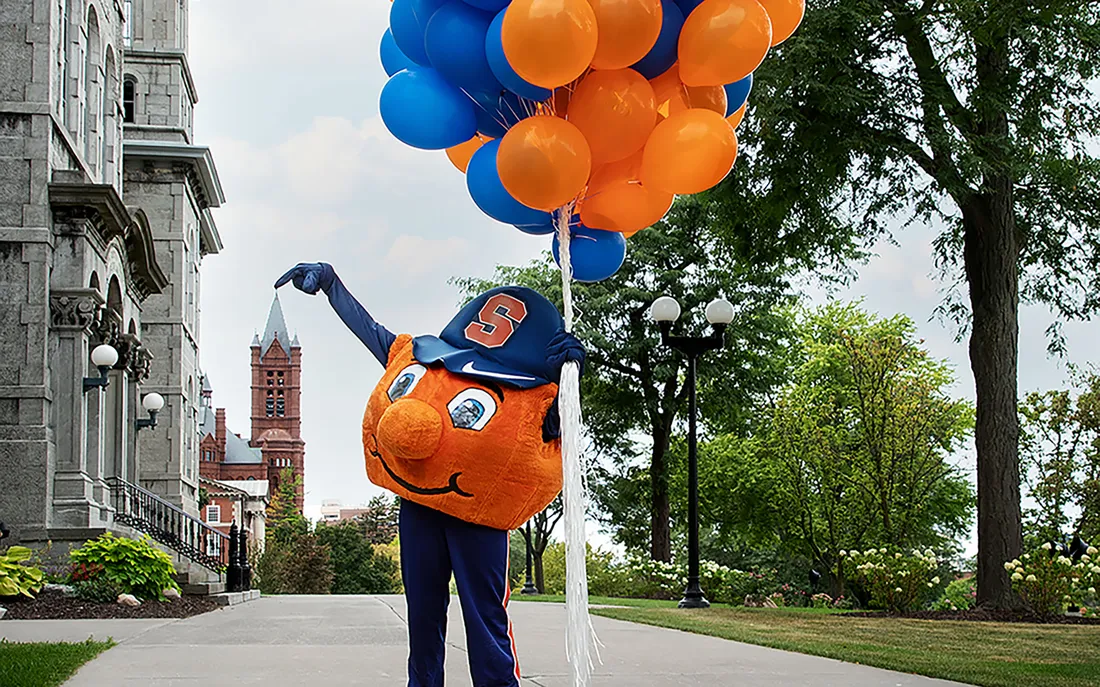
Otto the Orange brings energy and school spirit to events on campus and beyond, serving as a symbol of Syracuse pride.
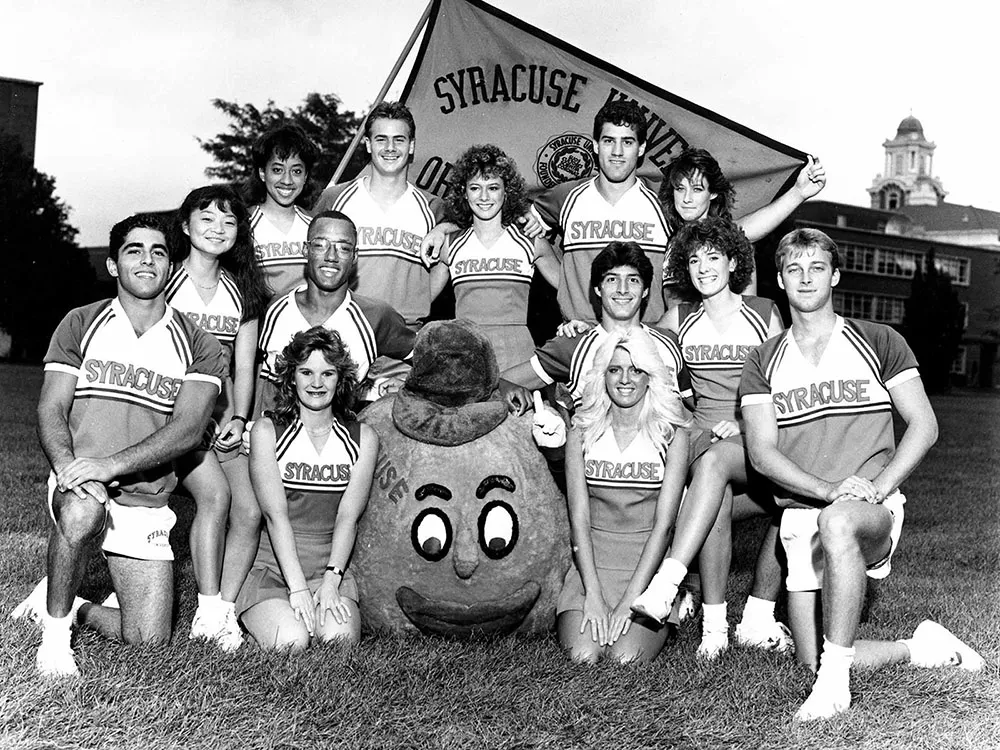
Otto’s appearance has evolved since this late 1980s group photo, but the mascot has continued as a consistent presence on campus for decades. (University Archives, Special Collections Research Center, Syracuse University Libraries)
In 1890, Syracuse became the country’s first college to designate orange as its official color, ousting pink and blue, which had unseated rose pink and pea green. After evolving looks and name changes, today’s ever-lovable Otto was officially named Syracuse’s mascot in 1995, joining a legacy that includes Vita the Goat.
Since then, Otto has become a campus favorite, showing up at games, campus events and around the city to rally Orange fans. With a big grin and boundless energy, Otto keeps the Syracuse spirit alive, uniting students, alumni and the entire Orange community. In 2023, Otto was inducted into the Mascot Hall of Fame in Whiting, Indiana, making them one of 38 professional and collegiate team mascots honored.
Energizing the Loud House
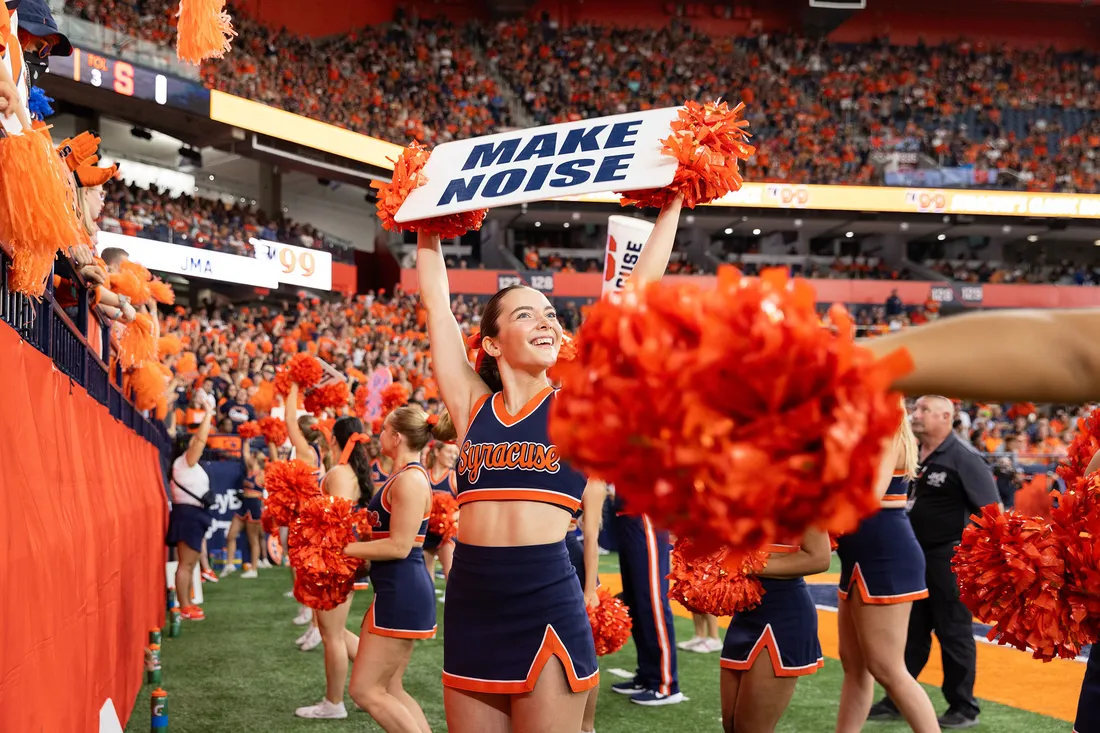
Fans pack the JMA Wireless Dome to support Syracuse’s athletic teams.
The JMA Wireless Dome radiates heart-thumping, ultra-Orange energy. Also known as the Loud House, it hosts athletic games and other events, regularly drawing record-breaking crowds for men’s basketball showdowns.
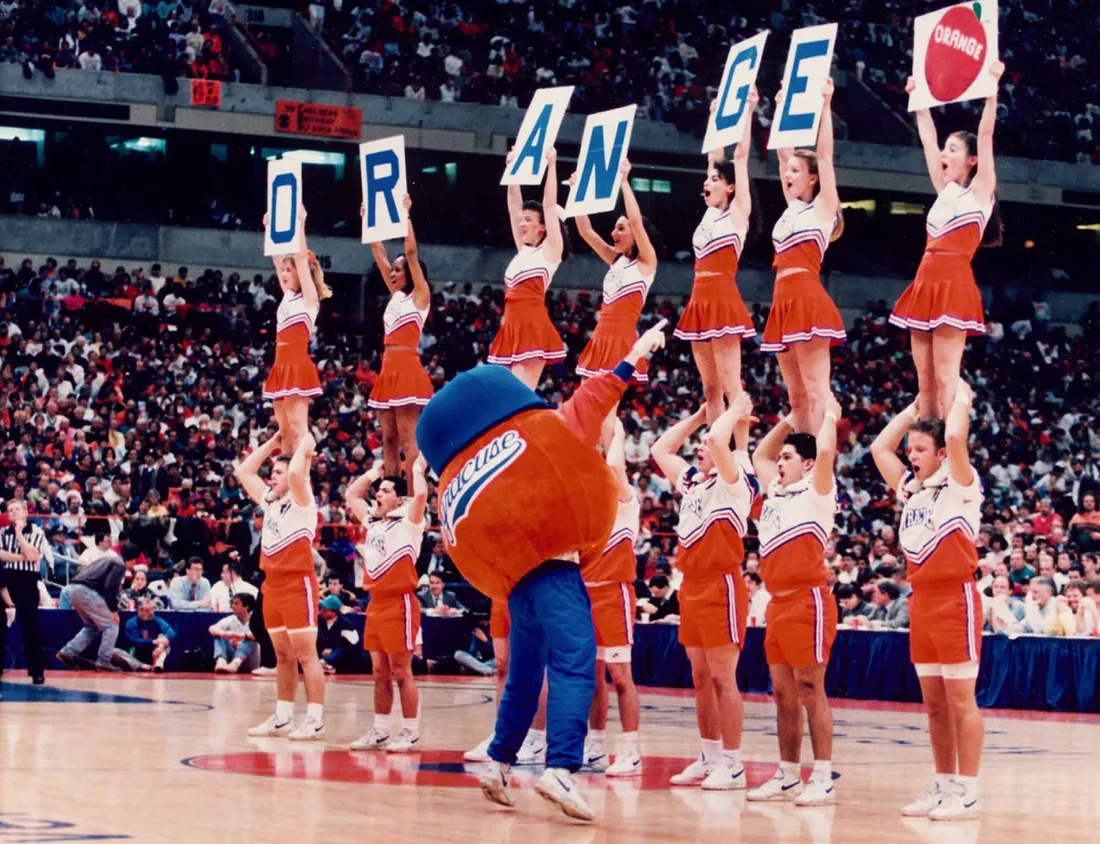
The JMA Dome has hosted generations of Syracuse basketball, football and lacrosse teams, each adding to the University’s rich athletic legacy. (University Archives, Special Collections Research Center, Syracuse University Libraries)
Before you enter, stand between the concrete pillars and do the Dome Stomp to echo your Orange enthusiasm. Once inside, shake your keys to foil football opponents on third down. At basketball tipoff, stand and clap until the Orange score their first point.
From the roar of the student section to the sea of waving orange, the JMA Dome feels electric—whether it’s cheering on the Orange, singing along to the fight song or celebrating a buzzer-beater.
A Number to Remember
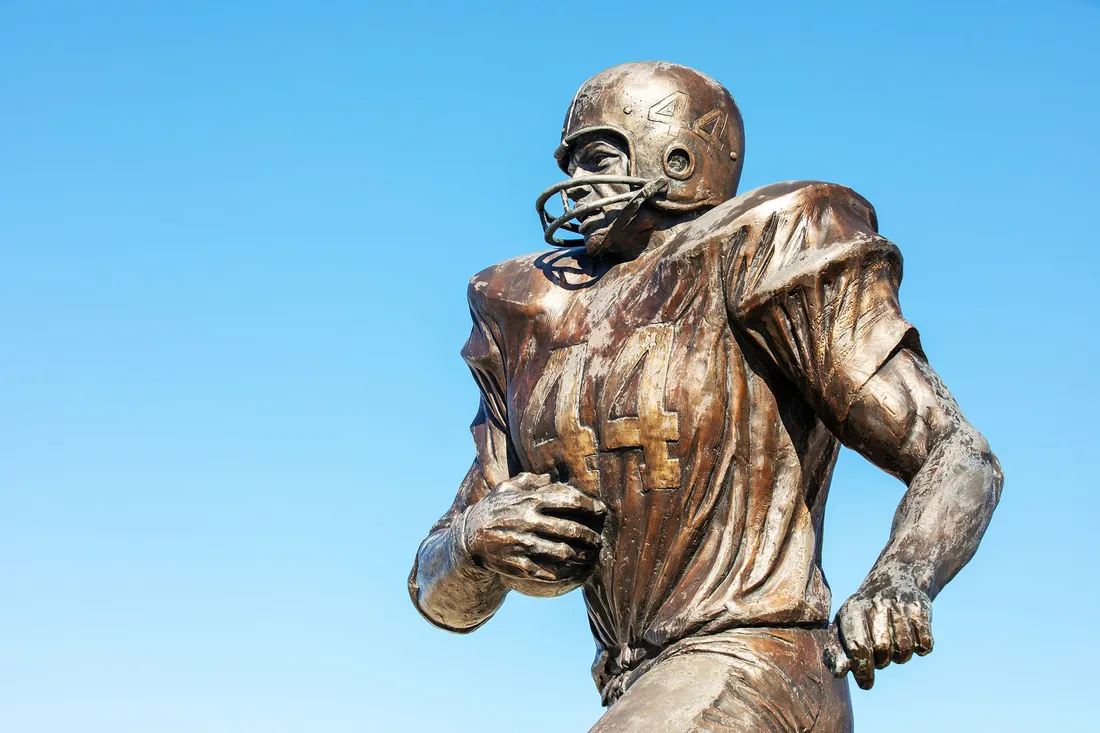
A statue of Floyd Little ’67 stands in Plaza 44, a tribute to one of Syracuse football’s all-time greats.
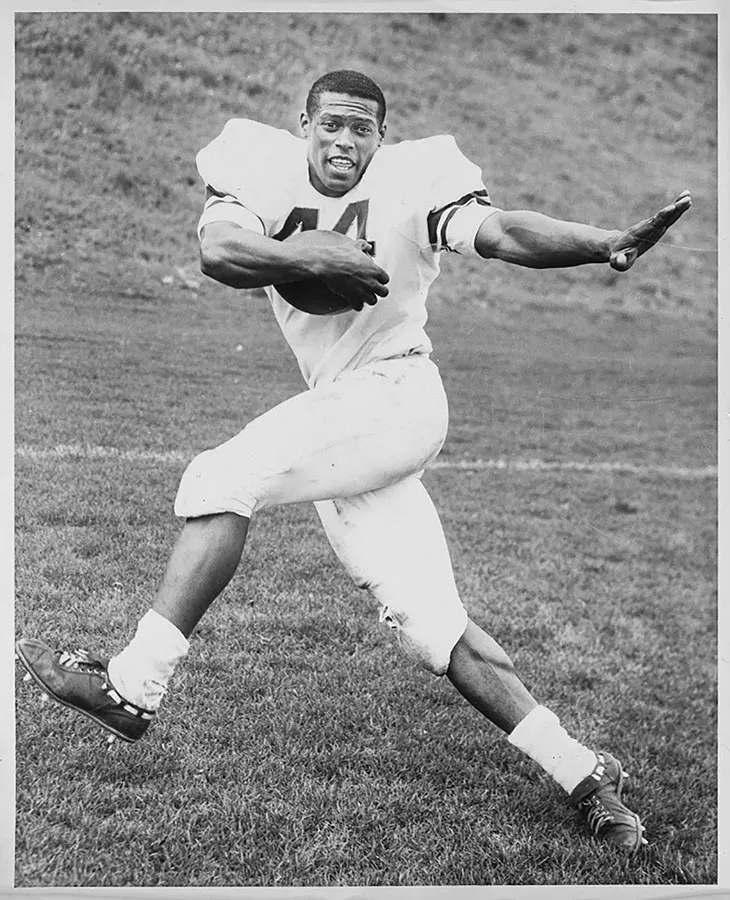
Little played as a running back for Syracuse from 1964-66, continuing the storied legacy of Orange football excellence. (University Archives, Special Collections Research Center, Syracuse University Libraries)
The number 44 attained icon status as the famed jersey number of Syracuse football greats Jim Brown ’57, Ernie Davis ’62 and Floyd Little ’67. Its ubiquitous presence today is reflected in Plaza 44 (where statues honor the gridiron legends), campus phone numbers, the campus ZIP code and all those fans draped in 44 jerseys.
A lasting symbol of excellence and pride at Syracuse University, the number serves as a constant reminder of the legacy these athletes built and the spirit that continues to drive the Orange forward.
Behold the Bell-Ringing Melodies
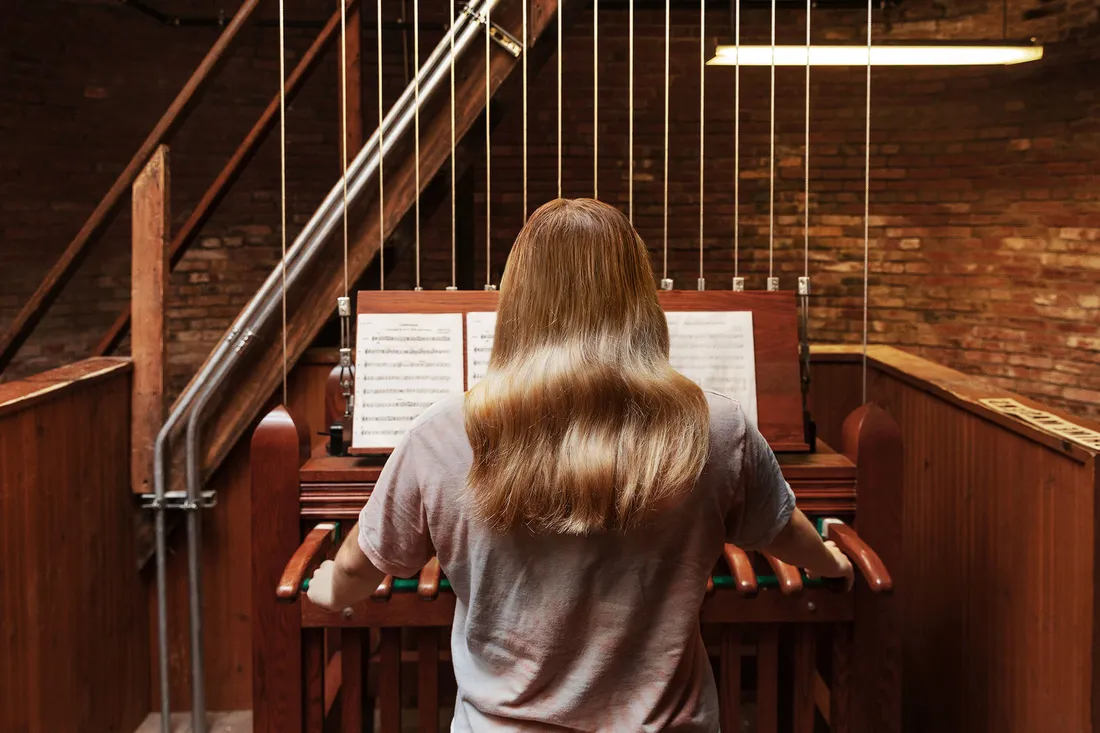
The sound of the Crouse Chimes has become a familiar and beloved part of life on the Hill.
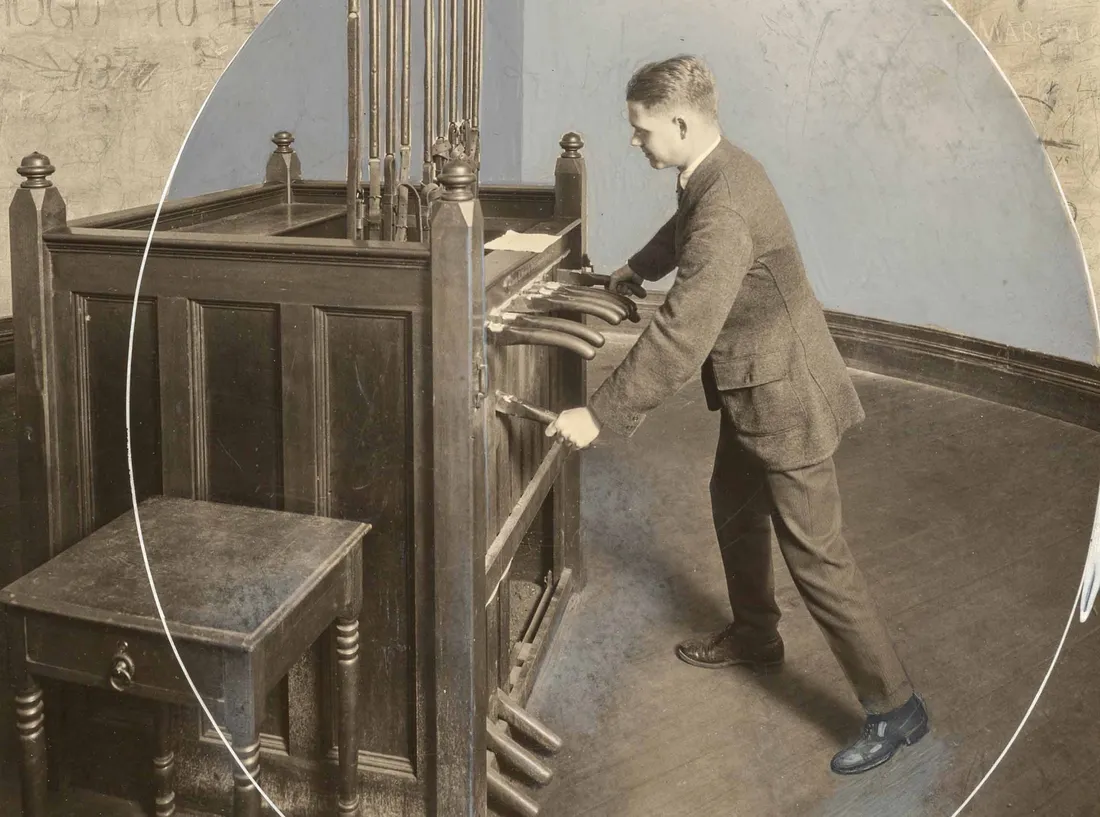
The Chimesmasters carry on a 135-year tradition of serenading campus from the heights of Crouse Tower. (University Archives, Special Collections Research Center, Syracuse University Libraries)
The Crouse Chimes have filled the Hill with the sound of music since nine of now 14 bronze-cast bells first clanged in 1889.
These days, the secretive Chimesmasters scale Crouse Tower to play the alma mater, the fight song and other memorable tunes—a tradition once carried out by Delta Kappa Epsilon.
Each performance is a treasured surprise, echoing across campus and creating moments of nostalgia for generations of students. Rain or shine, the chimes remain a timeless soundtrack to life on campus.
Lending a Welcoming Hand
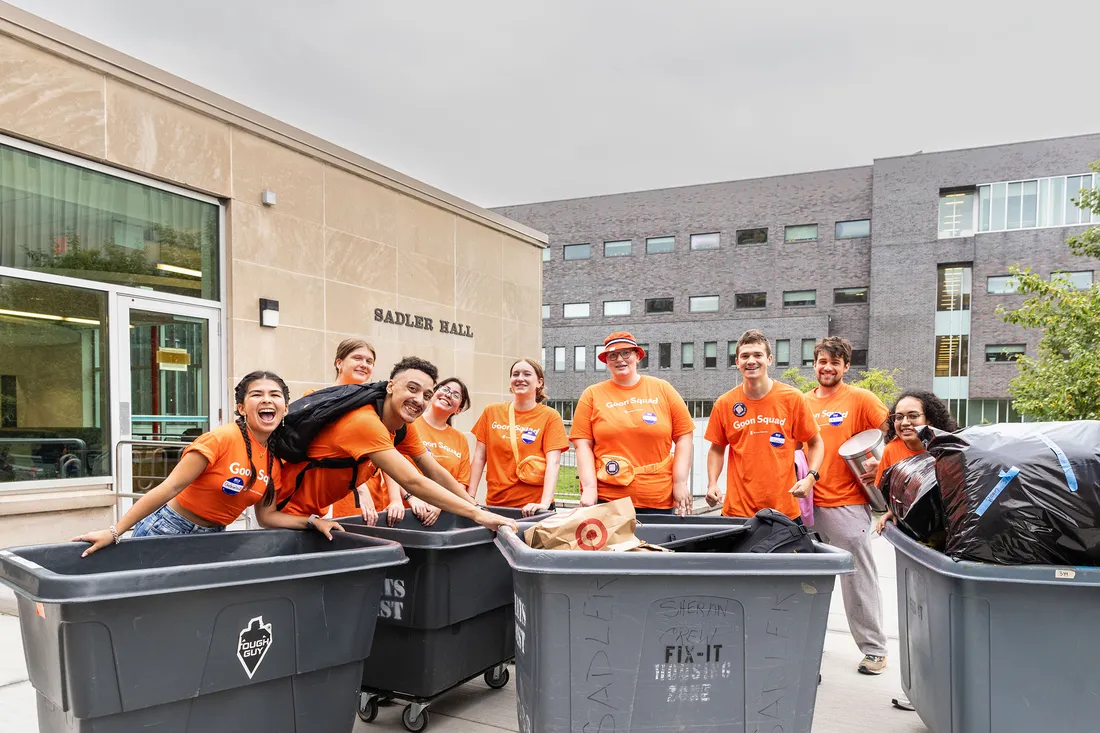
The Goon Squad greets new students with cheers and helping hands, making move-in day unforgettable.

The Goon Squad spirit of the 1960s and ’70s helped shape today’s welcoming tradition. (University Archives, Special Collections Research Center, Syracuse University Libraries)
When the Goon Squad was founded in 1944, its members enforced the ritual requiring first-year students to wear beanie caps. That edict soon vanished, and the group transformed into a team of cheerful volunteers helping new students cart their belongings to their residence hall rooms on move-in day.
Today, the Goon Squad remains a cherished Welcome Week tradition, making new students feel at home. With their bright shirts, loud cheers and helping hands, they’re often the very first glimpse of the warm, spirited community that defines life at Syracuse University.
Celebrating the Orange Community
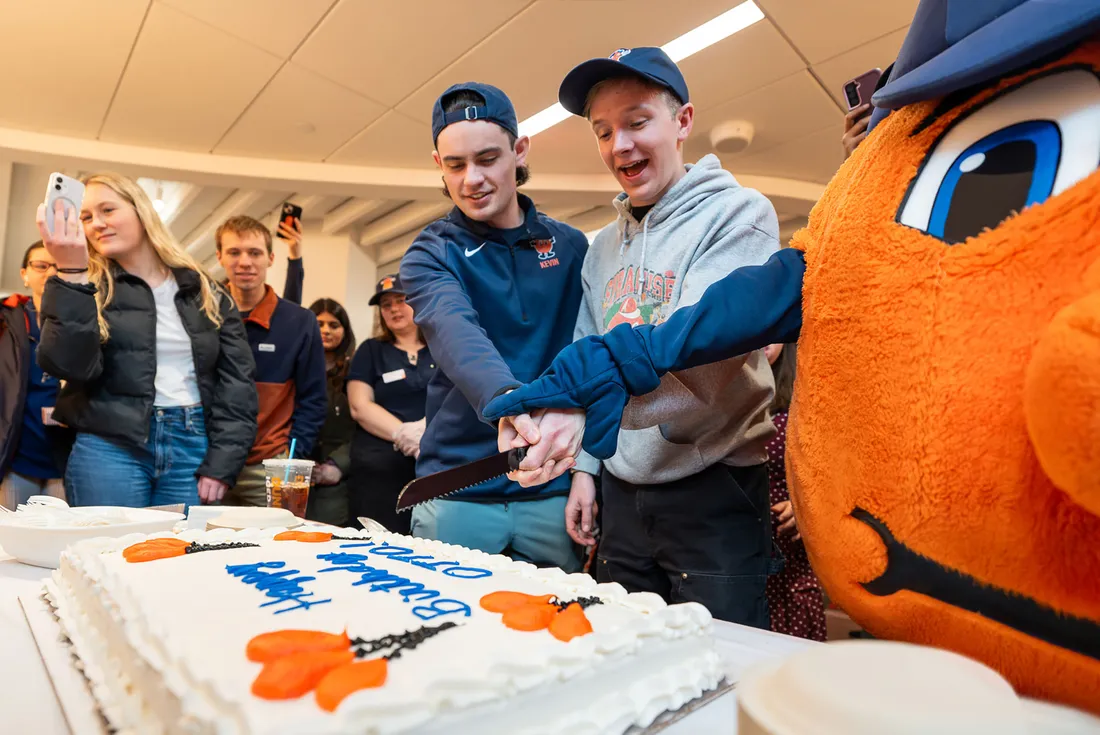
National Orange Day unites students, alumni and friends around the globe in a celebration of University pride.
On March 24, the University celebrates its founding anniversary date in 1870 with National Orange Day. Members of the Syracuse family break out their orange gear and participate in community service activities. Amid an array of events, the campus community joins the Chancellor and Otto for cake at the Schine Student Center.
The day honors Syracuse’s proud history and the strong bonds shared by students, alumni and friends. Whether on campus or across the globe, the Orange spirit shines bright, uniting the community in celebration.
Couples Take a Seat
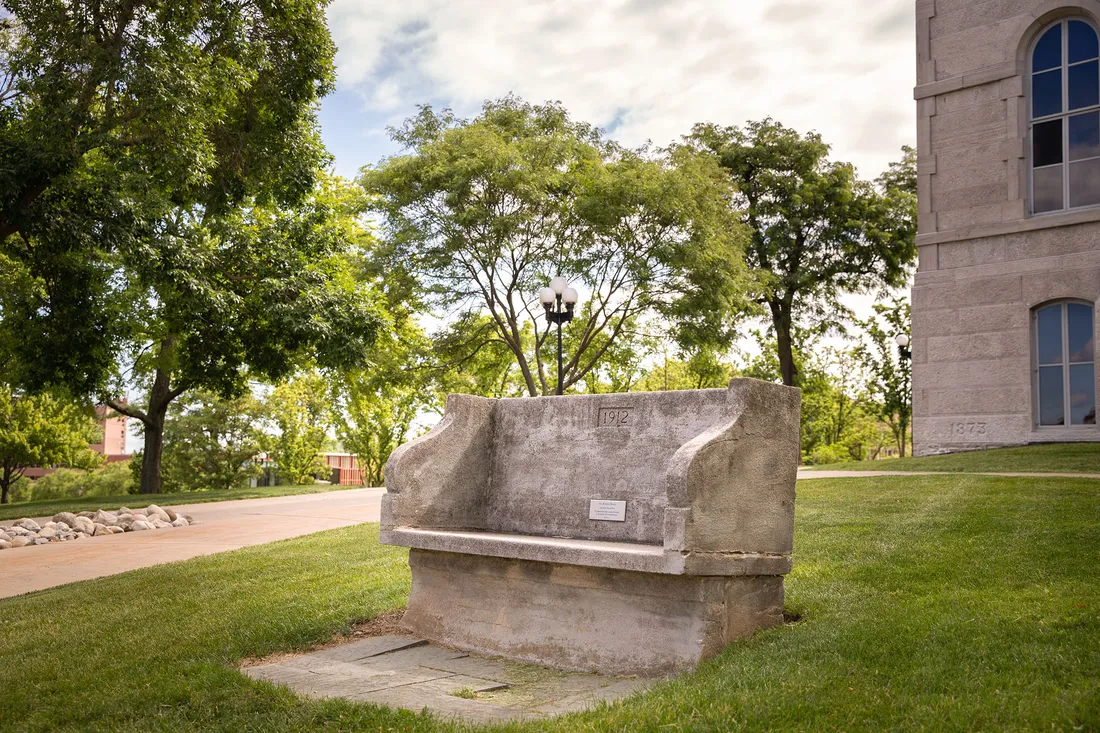
The Kissing Bench—where countless love stories begin—sits between the Hall of Languages and the Tolley Humanities Building.
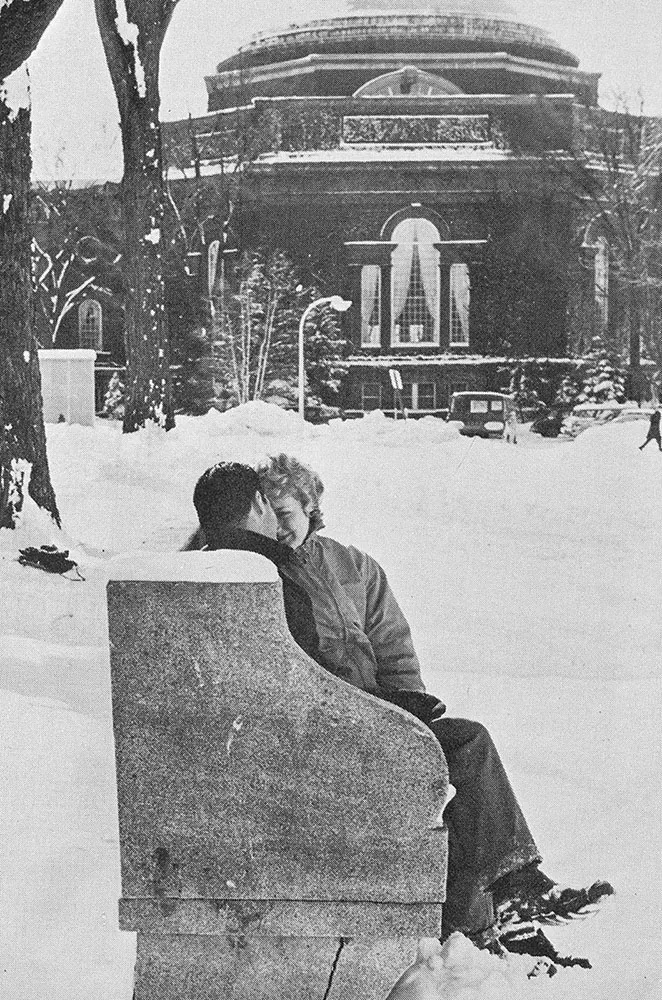
This early 20th-century landmark has been part of cherished memories for many Orange couples—including this pair in 1963. (University Archives, Special Collections Research Center, Syracuse University Libraries)
On the west side of the Hall of Languages sits the Kissing Bench, a spot where many a marriage proposal has been cast and confirmed with a kiss—supporting the tradition that those who sit on the bench together are destined to wed. Over the decades, the Kissing Bench has become a quiet witness to countless love stories, from first dates to golden anniversaries.
Couples can thank the Class of 1912, which gifted the stone-seat landmark to the University. Many alumni return years later to revisit the spot where their forever began, keeping the tradition alive for generations of Orange couples.
A Pooch’s Good Luck Paw
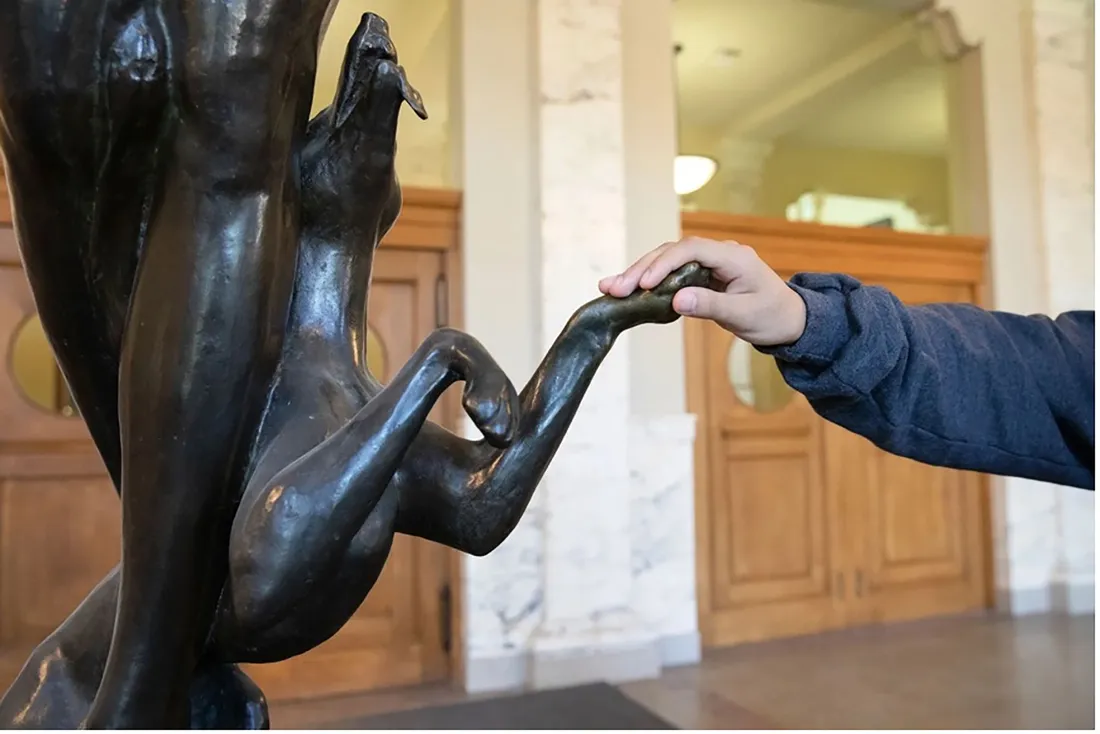
A student rubs the dog’s paw on the Diana the Huntress statue in Carnegie Library—a campus ritual believed to bring good luck.
The 12-foot bronze statue of Diana the Huntress and her dog that graces Carnegie Library was donated to the University in 1932 by sculptor Anna Hyatt Huntington. According to tradition, students who rub the dog’s paw while offering a prayer or good wish invite success on their exams.
Over the years, Diana’s dog has become a beloved campus fixture. Students line up to perform this ritual before big tests or important moments—a blend of art, tradition and a little bit of good luck that connects students across disciplines.


